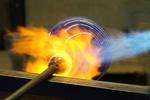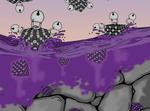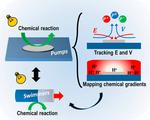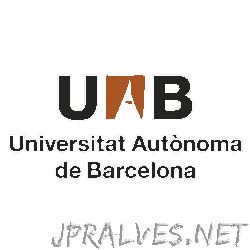Other

“As time passes, glass restructures itself towards more stable configurations which can affect its properties. Given that glass has numerous practical applications, knowing how this transition takes place is highly relevant. Researchers from the UAB Department of Physics and from …

“Yogesh Vohra, Ph.D., uses microwave-plasma chemical vapor deposition to create thin crystal films of never-before-seen materials. This effort seeks materials that approach a diamond in hardness and are able to survive extreme pressure, temperature and corrosive environments. The search …

“A new protocol created by researchers at the UAB sorts and classifies quantum data by the state in which they were prepared, with more efficiency than the equivalent classical algorithm. The research was published in Physical Review X. Quantum-based communication …

“Recent advances of research on the application of photovoltaic technologies for self-powering of neuromorphic devices are reported in a detailed review by Dr Amador Pérez-Tomás, of the ICN2 Oxide Nanophysics group, which has been just published in Advanced Materials Interfaces …

“Researchers from the ICN2 Physics and Engineering of Nanodevices Group have proposed a modified graphene-based nanodevice fabrication technique that has increased up to three times the spin lifetime and relaxation length compared to previous work of the same kind. The …

“Researchers from the ICN2 Phononic and Photonic Nanostructures Group have led a research which synchronised for the first time a couple of optomechanical oscillators. This work sets a solid basis for producing reconfigurable networks of such oscillators, with potential applications …

“Investigators from the ICN2 Advanced Electron Nanoscopy Group have collaborated in an international research to show that inorganic ligands can be used to improve the performance as a thermoelectric material of SnTe-CdSe nanocomposites. The efficiency obtained with this procedure is …

“A thorough study published on NanoLetters and led by the ICN2 Advanced Electron Nanoscopy group provides new insights on the growth mechanisms and conditions that determine the polarity of semiconductor nanostructures. Fine control of polarity can result in the design …

“ICN2 researchers investigate micropumps as a window into self-propelled micromotors and beyond. In the paper published this September in Accounts of Chemical Research, lead author Dr María José Esplandiu explains how their findings are important not only to harnessing the …

“In a refreshing change of perspective, theoretical physicist Dr Zeila Zanolli has looked at the proximity effects of graphene on a magnetic semiconducting substrate, finding it to affect the substrate’s magnetism down to several layers below the surface. Her …

